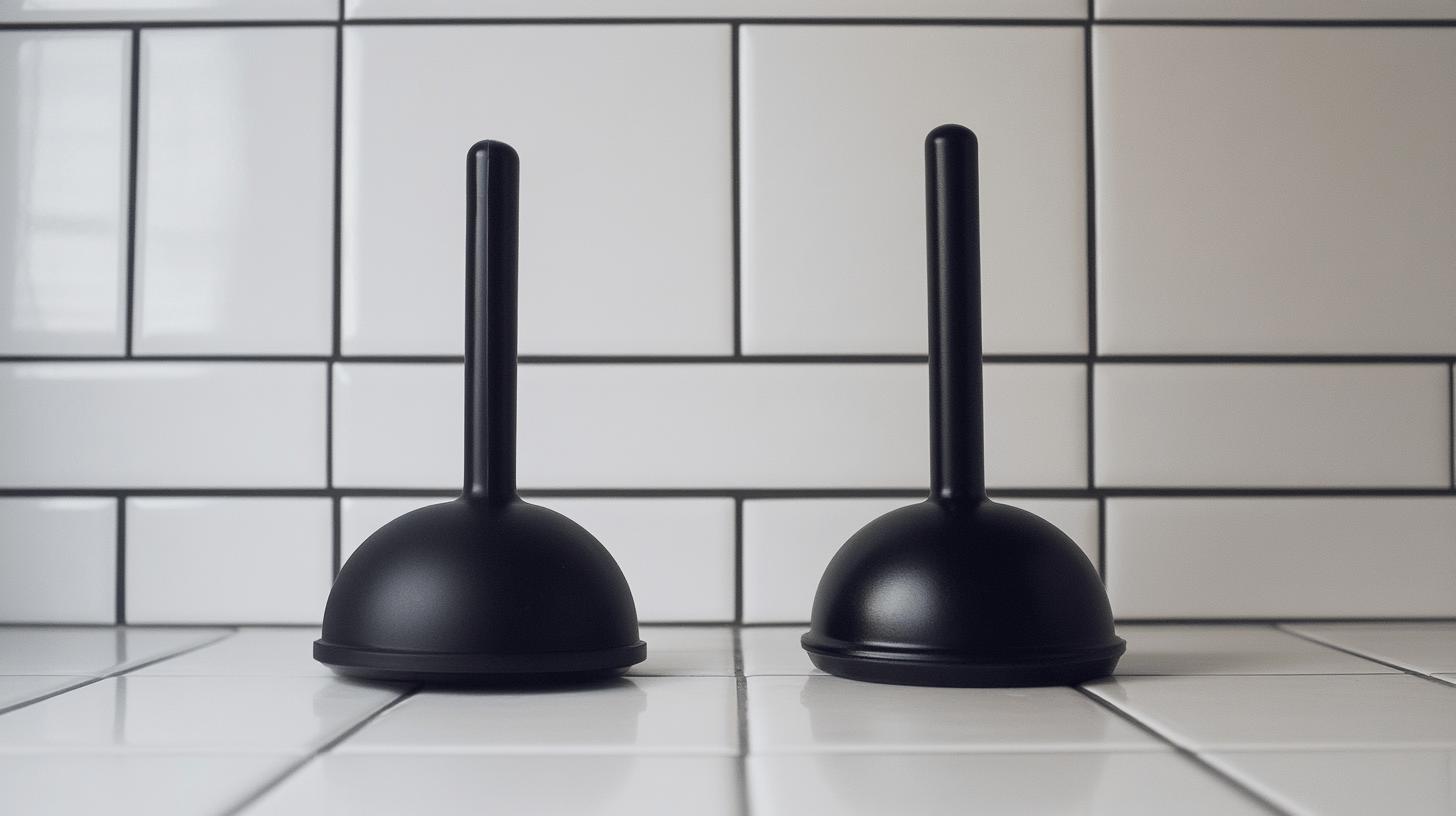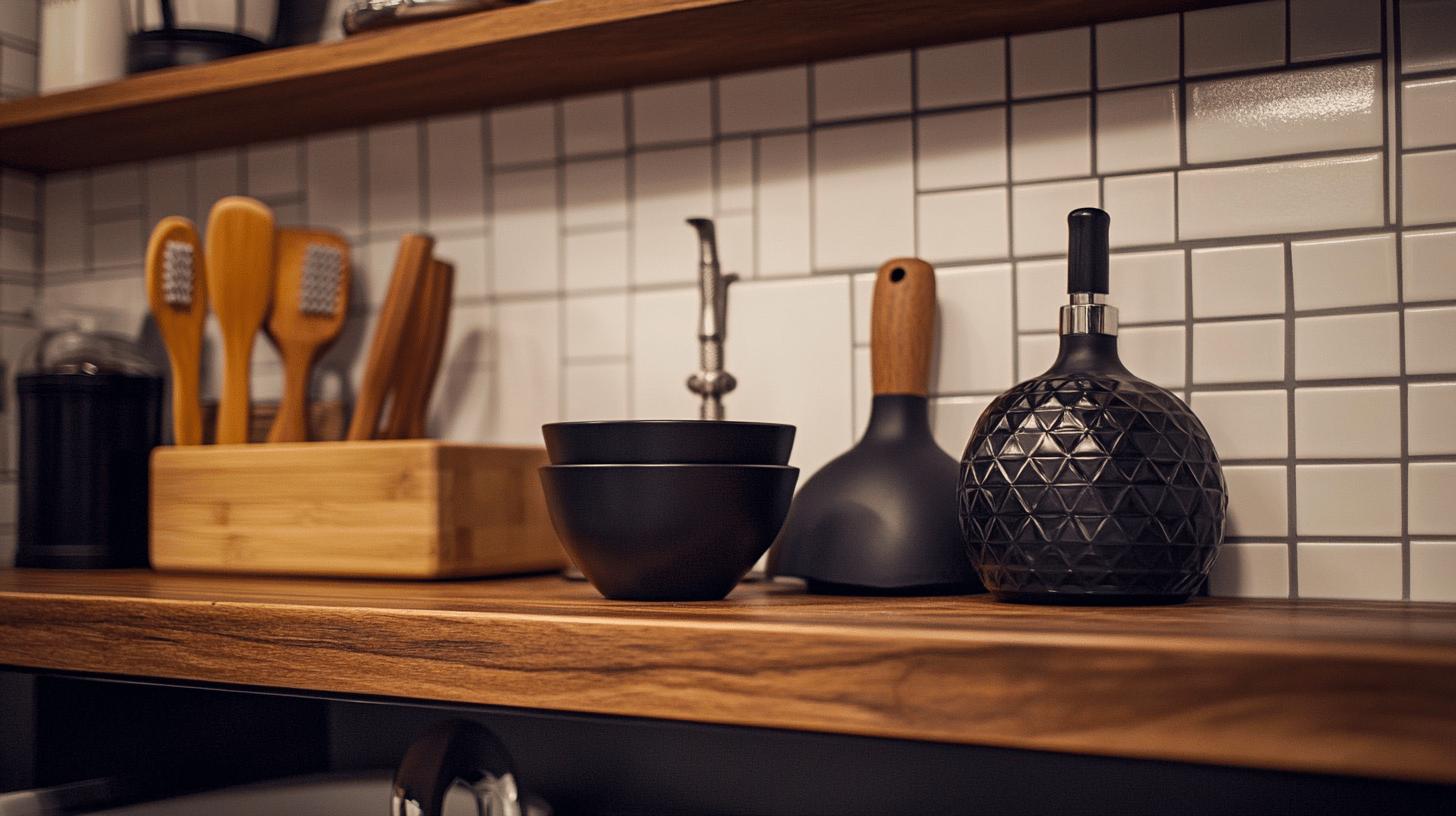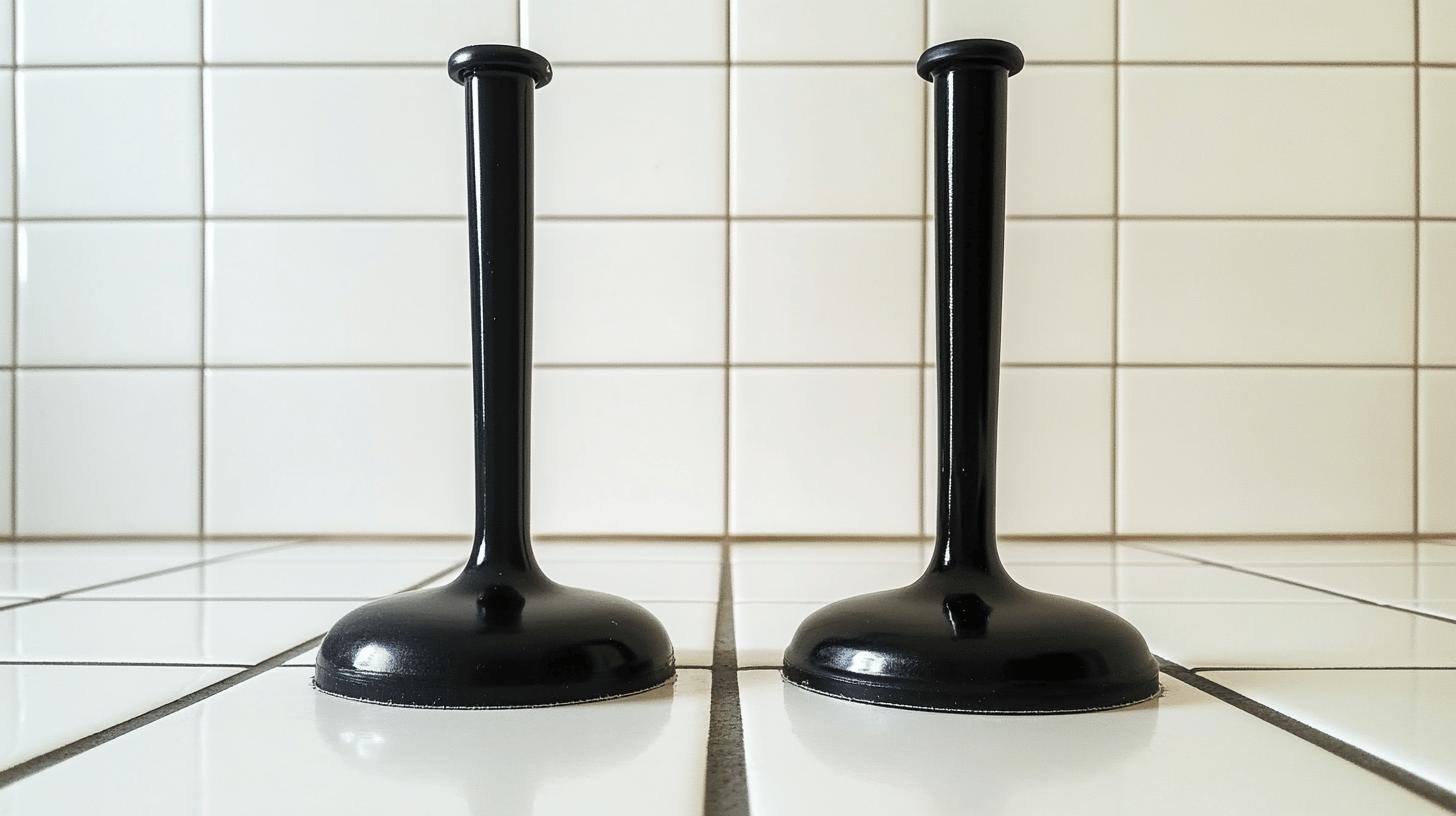TL;DR:
- Types: Cup plungers (flat rubber cup) for sinks/bathtubs; flange plungers (rubber flap) for toilets.
- Usage: Cup for flat drains; flange for toilet drains and curved pipes.
- Effectiveness: Flange plungers excel for toilet clogs; cup plungers are great on flat surfaces.
- Maintenance: Rinse after use, air-dry, store in a dry place, and check for wear.
- Recommendation: Have both types available for various clog scenarios; cup plungers are versatile but less effective for toilets.
Why do some plumbers prefer flange plungers while others stick with cup plungers? If you’ve struggled with a tough clog, you’ve probably wondered which tool works best. Knowing the difference between these two can help you clear clogs faster and avoid messy mistakes. Let’s break it down so you can figure out which one is the real hero for your bathroom emergencies.
Understanding the Basics: Cup Plunger vs. Flange Plunger
Cup and flange plungers are must-haves for tackling clogs, but they’re made for different jobs. A cup plunger, with its simple rubber cup and handle, works great on flat surfaces like sinks and bathtubs. It seals well over drains to clear blockages.
A flange plunger, also called a toilet plunger, has an extra rubber flap that fits tightly into curved toilet drains. This design makes it perfect for handling tough toilet clogs.
-
Design: Cup plungers feature a simple rubber cup, while flange plungers have an extra rubber flap for improved sealing in toilets.
-
Usage: Cup plungers suit flat drains like those in sinks, whereas flange plungers are perfect for toilets.
-
Effectiveness: Flange plungers are generally more effective for toilet clogs due to their strong seal in curved drains.
-
Versatility: Flange plungers can be used on flat surfaces if the flange is tucked in, offering more versatility.
-
Ease of Use: Cup plungers are easier for flat drains, while flange plungers need correct positioning into toilet drains.
Knowing the difference between cup and flange plungers is important for fixing clogs without causing damage. A cup plunger might not seal well in a toilet, while a flange plunger is made for the job. Using the right tool means better results and less risk to your fixtures. Having both at home ensures you’re ready for any clog.
When to Use Each Type of Plunger

Choosing between a cup plunger and a flange plunger is all about where you’re using it. Cup plungers work best on flat surfaces like sinks and bathtubs because of their simple, flat design. Flange plungers, with their extra rubber flap, are made for toilets, sealing tightly to tackle tougher clogs. Matching the tool to the job makes clearing clogs easier and more effective.
Cup Plunger Usage
Cup plungers handle clogs in flat surface drains. Here’s when they work best:
-
Sinks: Ideal for kitchen or bathroom sinks, creating a vacuum seal for shallow clogs.
-
Bathtubs: Use it to clear bathtub clogs with a tight seal.
-
Flat Surface Drains: Effective for any flat surface drain, like in showers, due to its wide rubber cup fitting over the drain.
Flange Plunger Usage
Flange plungers are perfect for clogs in toilets and curved pipes. Use them in these cases:
-
Toilets: Essential for toilet clogs, with the flange fitting into the drain for strong sealing.
-
Curved Drain Pipes: Suitable for curved pipes because of its adaptable design.
-
Deep Clogs: Handles deeper clogs with needed suction in toilets.
Picking the right plunger is key to avoiding damage and clearing clogs effectively. A cup plunger doesn’t work well in toilets since it can’t form a proper seal, while a flange plunger is perfect for toilet drains and can also work on flat surfaces. Knowing which one to use saves time, protects your fixtures, and makes unclogging easier.
Effectiveness of Plungers for Different Clogs
Household clogs happen in toilets, sinks, bathtubs, or showers, and each needs a different fix. Choosing the right plunger—cup for sinks and bathtubs, flange for toilets—can make all the difference. Matching the plunger to the clog ensures quick, safe, and effective results.
| Clog Type | Cup Plunger Effectiveness | Flange Plunger Effectiveness |
|——————-|——————————|———————————|
| Toilet Clogs | Low—poor seal | High—proper seal |
| Sink Clogs | High—flat surfaces | Moderate—flange tucked |
| Bathtub Clogs | High—flat surfaces | Moderate—flange tucked |
| Shower Drains | High—flat surfaces | Moderate—flange tucked |
Flange plungers are perfect for toilet clogs because their snug fit creates a strong seal for effective plunging. Cup plungers work best on flat surfaces like sinks, bathtubs, and shower drains, sealing the drain completely.
While flange plungers can be versatile, they aren’t always ideal for non-toilet clogs. For tough or deep clogs that plungers can’t fix, it’s best to call a plumber. They have advanced tools and techniques to clear clogs safely and thoroughly.
Expert Recommendations and User Reviews

Experts recommend keeping both cup and flange plungers at home because they serve different purposes. Cup plungers are ideal for flat surfaces like sinks and bathtubs, while flange plungers are designed for toilet drains. Having both ensures you’re ready to handle any type of clog efficiently.
-
Use a cup plunger for flat surface drains, creating a strong vacuum seal.
-
Choose a flange plunger for toilet clogs, sealing the flange securely in the drain.
-
Regularly check and maintain plungers for optimal condition.
Flange plungers are user favorites for toilet clogs, thanks to their strong seal that clears tough blockages. Cup plungers are praised for their versatility and ease in unclogging sinks, tubs, and other flat drains but struggle with toilets. Having both plungers ensures you’re ready for any plumbing issue, making them essential tools for home maintenance.
Maintenance and Storage Tips for Your Plungers
Taking care of your plungers is key to keeping them effective. Cleaning them regularly and storing them properly prevents mold, bad smells, and wear and tear. This helps them maintain good suction and last longer. Neglecting maintenance can lead to reduced performance and even damage, making clogs harder to clear.
-
Rinse plungers thoroughly after use to remove debris.
-
Air-dry completely before storing to prevent mold and mildew.
-
Store in a dry, ventilated area to avoid moisture buildup.
- Check regularly for wear or damage that could affect performance.
By following these tips, your plunger will be ready to tackle any clog. Keeping it clean and dry not only boosts its performance but also helps maintain a more hygienic home. Regular checks will help you catch any issues early, so you can fix them before they affect the plunger’s effectiveness.
Final Words
Choosing the right plunger for your plumbing needs can save you time and prevent damage. Understanding the differences between a cup plunger and a flange plunger helps you tackle clogs more effectively.
Cup plungers are ideal for flat surfaces like sinks, while flange plungers fit snugly in toilet drains. Having both types on hand prepares you for various clog situations, backed by expert advice and user feedback.
Proper maintenance and storage keep your plungers working efficiently, ensuring they’re always ready for your next plumbing challenge.
FAQ
What is the difference between a flange plunger and a cup plunger?
A flange plunger features an additional flap under the rubber cup, enhancing its seal for toilets.
A cup plunger, with a basic rubber cup, suits flat surfaces like sinks and bathtubs.
What is a cup plunger used for?
A cup plunger is ideal for unclogging flat surface drains such as sinks and bathtubs.
Its simple design allows it to create a seal on these even surfaces.
Can a flange plunger be used on a sink?
A flange plunger is not the best choice for sinks.
It is designed for toilet drains where it offers a better seal.
What is the most effective type of toilet plunger?
A flange plunger is most effective for toilets.
Its design with an additional flap provides a secure seal, making it better at handling toilet clogs.
How do you use a flange plunger?
For effective use, position the flange plunger over the toilet drain, ensuring a good seal.
Utilize a steady push-pull motion to dislodge the clog.
What plunger types are best for a shower drain?
A cup plunger works well for showers due to its suitability for flat surfaces.
Ensure the cup seals around the drain before plunging.
How do accordion plungers compare to other types?
Accordion plungers offer greater force, making them effective for difficult clogs.
However, they can be challenging to maneuver compared to cup or flange plungers.
What is the best type of plunger for a toilet?
The flange plunger is generally recommended for toilets for its ability to create a strong seal,
efficiently managing typical toilet clogs.
How are cup and flange plungers sized?
Both plunger types come in various sizes to suit different preferences and drain dimensions.
Choosing a size that fits well with your specific drains is crucial.

